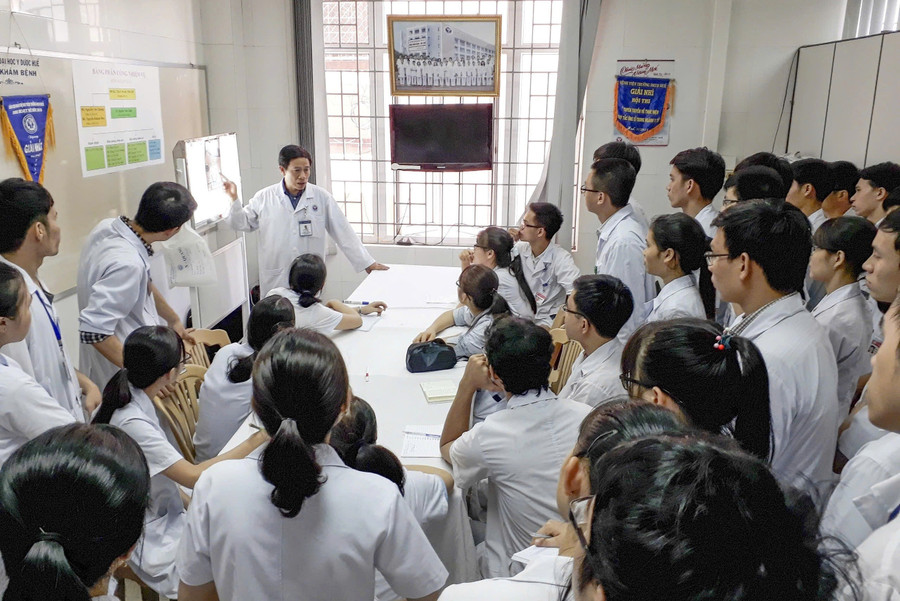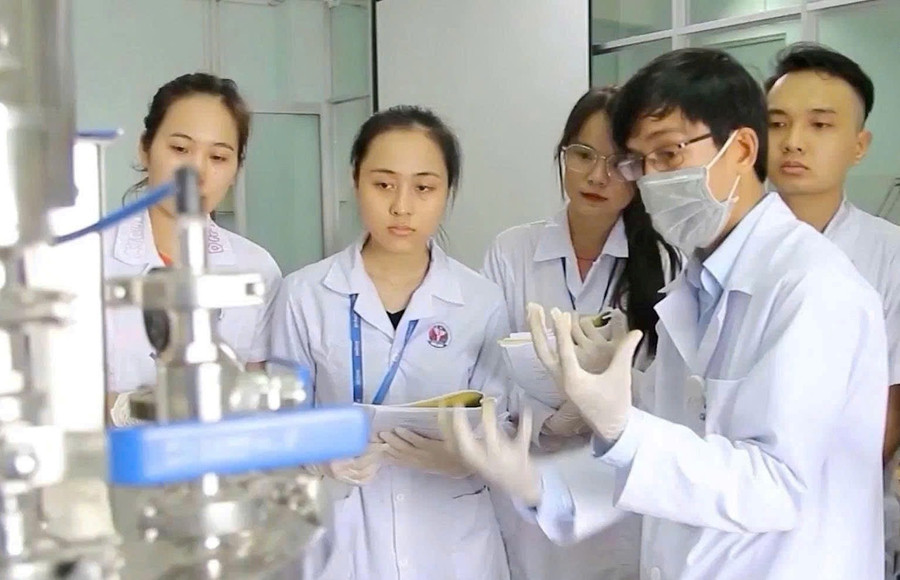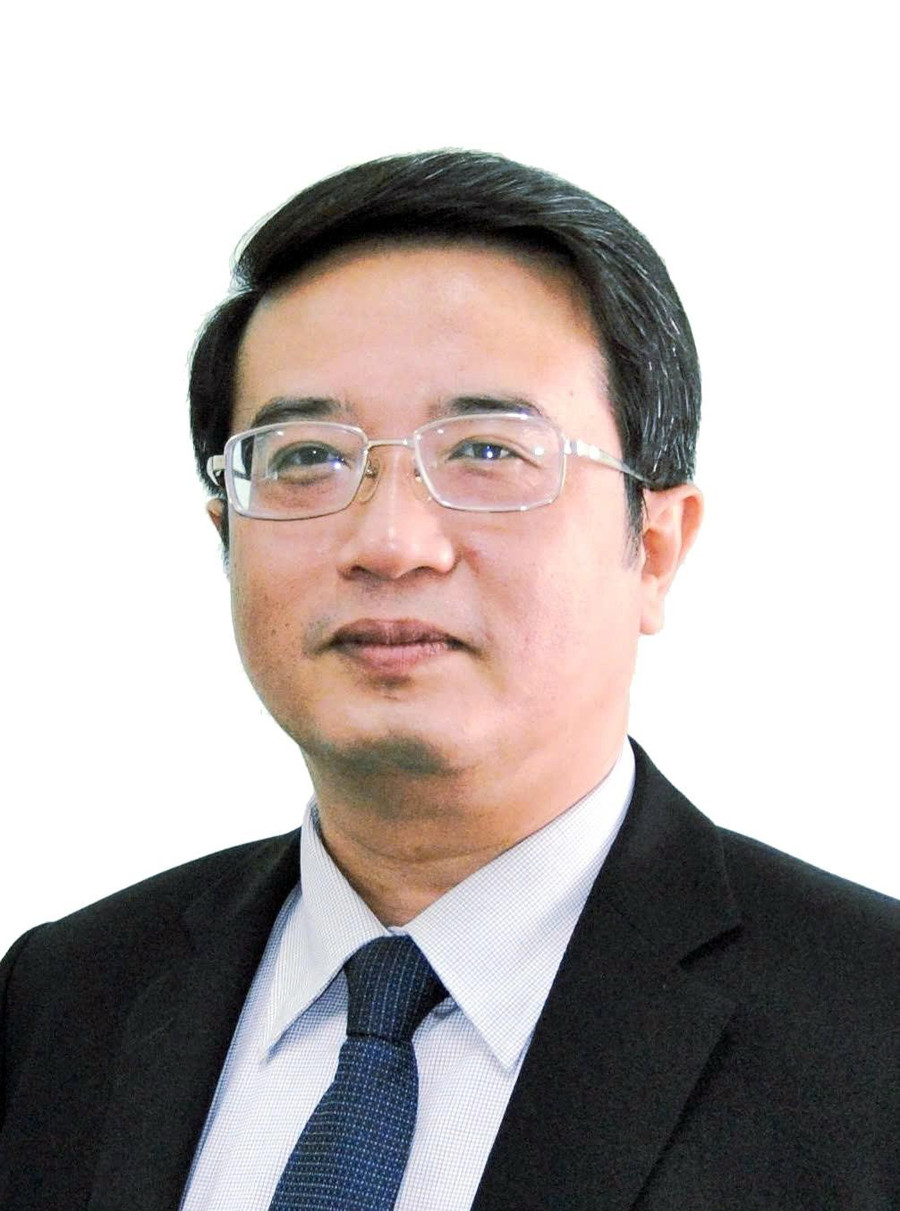There is a huge demand for high-quality medical personnel.
Prof. Dr. Nguyen Vu Quoc Huy, Rector of the University of Medicine and Pharmacy (Hue University) said that Resolution No. 71-NQ/TW dated August 22, 2025 of the Politburo on breakthroughs in education and training development affirmed the guiding viewpoints: "Education and training must ensure "learning goes hand in hand with practice", "theory is closely linked to practice", "school is closely linked to society" and "Breakthroughs in education and training development must start from innovation in thinking, awareness and institutions. Create breakthroughs in resources, motivation and new space for education and training development, improve quality".
In addition, Resolution No. 72-NQ/TW dated September 9, 2025 of the Politburo on a number of breakthrough solutions to strengthen the protection, care and improvement of people's health reaffirmed the guiding viewpoint: "Pay attention to training and developing quality, balanced, ethical and competent health human resources to meet the requirements, tasks and satisfaction of the people; have preferential policies and special treatment throughout the process from training, recruitment, use, promoting the capacity and strengths of the health staff".
With the above foundations, innovation and improvement of the quality of training of medical human resources is an extremely urgent task, of high political, scientific and practical significance, meeting the requirements of caring for, protecting and improving people's health in the new situation, contributing to the successful implementation of the Party and State's policies and guidelines, bringing the country into a new era of development - the era of the Vietnamese people's rise.
According to statistics from the Ministry of Health in 2024, the country currently has 71 educational institutions (ECs) training medical personnel at university level and 8 institutes training at doctoral level. Among these 71 university ECs, 21 are specialized in health sciences and 50 are multidisciplinary, including health sciences. In addition, the country currently has 102 colleges and 37 intermediate schools training medical personnel at college and intermediate levels.
Statistical reports show a serious shortage of medical personnel in terms of quantity, quality and uneven distribution. Regarding doctors, Vietnam has a ratio of 14 doctors/10,000 people, while the target set for 2025 is to reach 15 doctors and 35 doctors/10,000 people by 2050. It is forecasted that in the period 2021-2030, the country will still lack about 173,400 doctors.

Regarding preventive health human resources, the country is short of about 23,800 people, of which about 8,075 are preventive medicine doctors and 3,993 are public health bachelors. The total number of staff working in preventive health from the central to district levels only meets about 42% of the human resource needs.
Statistics from the Vietnam Nursing Association show that by 2024, the nursing ratio in our country will only reach 18 people/10,000 people, much lower than the target set for 2025 of 25 nurses/10,000 people. This index is lower than the global average and only about 1/8 compared to developed countries. It is forecasted that in the period 2021 - 2030, Vietnam will need about 313,900 more nurses.
The Lancet Independent Commission (2010) report on medical education in the 21st century recommended the need to develop a comprehensive education system to improve the quality of health care human resource training, emphasizing the importance of close coordination between the health care system and the education system. With these recommendations, since the early years of the 2010s, the Ministry of Health has chaired with domestic and foreign medical education experts to evaluate and propose a number of major solutions to comprehensively reform medical education in Vietnam, including: 1) Redefining the competency standards of all types of health care human resources, 2) Strengthening cooperation between schools and hospitals in clinical competency training, and 3) Developing a national system for assessing professional competence.
Since 2015, the Health Human Resources Education and Training Project for Health System Reform (HPET Project) funded by the World Bank has strongly innovated the Medical and Dentistry training program towards competency-based integration at 5 major medical and pharmaceutical universities in Vietnam, including Ho Chi Minh City University of Medicine and Pharmacy, Hue University, Thai Nguyen University of Medicine and Pharmacy, Hai Phong University of Medicine and Pharmacy, Thai Binh University of Medicine and Pharmacy and a number of colleges and medical units nationwide. In parallel with the HEPT Project, the IMPACT-MED Project funded by USAID, the United States, has also provided technical support from Harvard Medical University, the United States, for the innovation of the Medical training program and the residency training program.
Resolution 71 and action programs to improve health science training
According to Prof. Dr. Nguyen Vu Quoc Huy, from Resolution 71, in order to improve the quality of training in health sciences, it is necessary to continue researching and perfecting specific preferential policies and ordering mechanisms in training medical human resources, especially medical human resources serving primary health care, preventive medicine, public health, remote areas, border areas, and islands.
“Along with that is the strong innovation of the training program towards competency-based integration. Competency-based integrated education is a new and modern trend of world medical education, focusing on building core professional practice capacity for learners.

At the same time, it is necessary to strongly innovate advanced teaching methods that focus on learners such as flipped classrooms, integrated, problem-based, collaborative, anytime-anywhere learning, simulation, virtual environments, interdisciplinary education... To properly assess learners, it is necessary to strongly innovate competency-based assessment methods such as structured tests, computer-based exams, electronic "school records", rapid clinical assessment, objective structured assessment...
In particular, the training program should be innovated in the direction of strengthening training in medical ethics, sense of responsibility, laws in medical practice, codes of conduct, and communication skills" - Professor, Dr. Nguyen Vu Quoc Huy commented.

One point to note is that we must focus on developing lecturers through continuous training and education for this team. Specifically, training to improve capacity in competency-based education, curriculum development, teaching methods; competency-based assessment and continuous quality improvement.
According to the Principal of the University of Medicine and Pharmacy, there needs to be a mechanism to strengthen coordination between university education institutions and vocational education institutions to enhance connectivity in output standards, meeting the lifelong learning needs of learners and the medical human resource needs of society.
Finally, it is necessary to have mechanisms and create favorable conditions to develop practice facilities of training institutions according to the School - Institute principle to meet practical training requirements. Increase investment to expand development space for health sector educational institutions to meet the quality standards of higher education according to Circular No. 01/2024/TT-BGDDT of the Ministry of Education and Training; and increase investment in infrastructure and equipment to develop and improve the quality of key health human resource training facilities.
Source: https://giaoducthoidai.vn/nghi-quyet-71-thuc-day-tang-chat-luong-dao-tao-cac-nganh-khoa-hoc-suc-khoe-post749589.html



![[Photo] Cutting hills to make way for people to travel on route 14E that suffered landslides](https://vphoto.vietnam.vn/thumb/1200x675/vietnam/resource/IMAGE/2025/11/08/1762599969318_ndo_br_thiet-ke-chua-co-ten-2025-11-08t154639923-png.webp)







































![[Video] Hue Monuments reopen to welcome visitors](https://vphoto.vietnam.vn/thumb/402x226/vietnam/resource/IMAGE/2025/11/05/1762301089171_dung01-05-43-09still013-jpg.webp)


































































Comment (0)